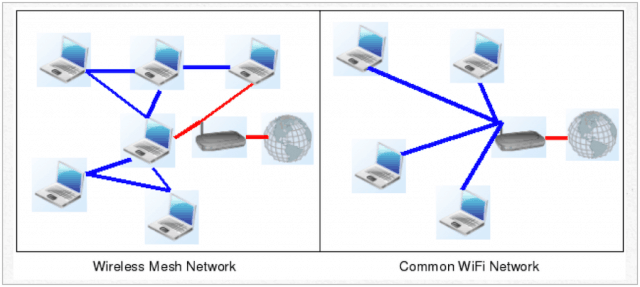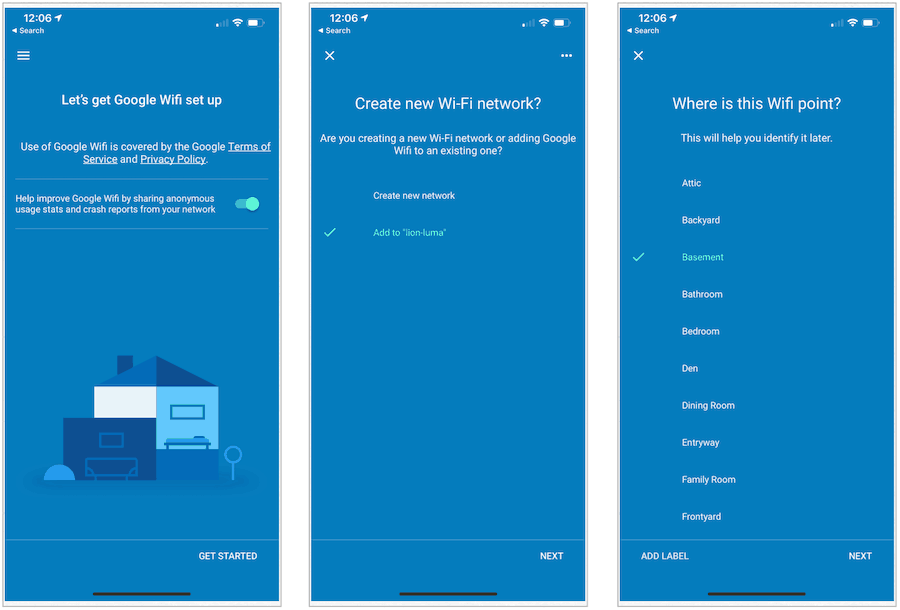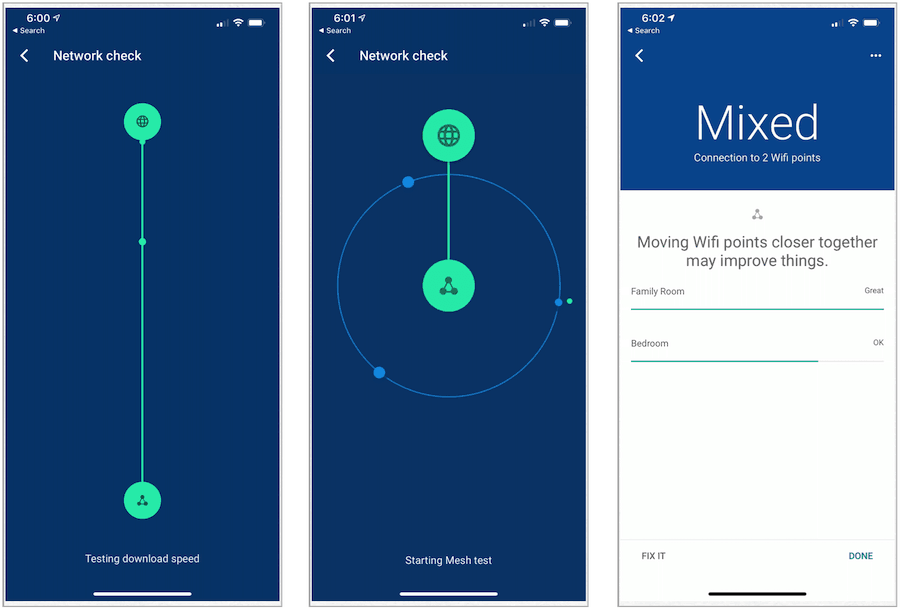What is Google Wi-Fi and How Do I Get Started?

Google Wifi is a home networking product that uses Mesh Networking to improve the overall Wi-Fi coverage in your home. Here’s a look at what it is and what you can expect.
Products like Google Wifi are replacing traditional home router networks, which often produce dead zones. It’s called mesh networking. And these products have been designed to improve Wi-Fi accuracy and coverage in home environments. Simple in its execution and setup, Google Wifi is one of the most popular mesh networking solutions on the market and has been since launching in late 2016.
What is a Mesh Network?
A traditional home network includes one router that’s either connected to or part of a modem. In large homes and those with more than one floor, Wi-Fi range extenders are used to re-broadcast the router’s signal, usually by creating a separate network. Depending on the number of extenders, this system quickly becomes inefficient since you must manually switch your devices back and forth between networks as you move around. Additionally, most range extenders cut your bandwidth in half since wireless is half-duplex, which means connected devices can’t send and receive information simultaneously, thereby slowing things down.
Mesh networks like Google Wifi replace an existing Wi-Fi network. One device, called a node, is connected to your current modem while placing other nodes around your home. Unlike a router-and-extender setup, there’s only one network under this scenario. And because Wi-Fi broadcasts from each node (also called Wifi points), and not just a single router, you can extend your coverage with ease by added more units at any time.
As you move around the house with your devices, you’re always automatically connected to the nearest node, thereby guaranteeing a consistent, fast signal.


Google Wifi
Mesh starter kits typically ship with two or three nodes with only the one connected to your modem requiring an Ethernet cable. The rest function on your network wirelessly. Google Wifi, available in a 3-pack or 1-pack, provides 1,500 square feet of coverage per node. Most homeowners will want to start with the 3-pack and will then have to decide whether adding more nodes is best. My home is approximately 2,200 square feet across three floors. For this, the 3-pack is necessary. Keep in mind how Wi-Fi signals travel is affected by the materials in a home, so even a home of the same size might need more or fewer nodes.
Installation
Setting up your Google Wifi network takes only a few minutes, depending on the number of nodes needed to install. Google Wifi ships with Wifi points, an ethernet cable for the primary Wifi point, and power adapters for each Wifi point. Each device includes two Gigabit Ethernet ports.
Other requirements include a Google account username and password, a broadband connection, and a compatible modem.
To install Google Wifi:
- Download the Google Wifi app on your mobile device. The required app is available on the App Store and Google Play.
- Connect your primary Wifi point to your existing modem using the included Ethernet and power cables. In a Google Wifi 3-pack, it doesn’t matter which node you select as the primary since they’re all the same. Ideally, you should place the node on a shelf or TV stand at eye level.
- Connect the provided Ethernet cable to the WAN port of your Google Wifi point. Then connect the other end to your modem.
- Plug your Google Wifi point into a power outlet. The light slowly flashes blue to indicate that it’s powered on and ready for setup.
- Open the app, review the Terms of Service and Privacy Policy. Uncheck the box if you want to opt-out of sharing anonymous usage stats and crash reports to help improve Google Wifi.
- Tap Get started.
- Sign in to your Google Account.
- Follow the additional commands to get your first node online.


Troubleshooting
You can more nodes using the Google Wifi app. Google suggests placing Wi-Fi points no more than two rooms away from each other. Elevated positions are best, especially if you have more than one floor. You can perform a mesh test with the app to check your Wi-Fi points for poor connections.
When the app detects a poor connection, Google suggests:
- Line of sight: Google Wi-Fi points perform better when they can see each other. Repositioning Wifi points to avoid obstructions like walls, doors, and aquariums can improve performance.
- Get off the ground: Lifting devices off the ground can greatly improve coverage.
- Consider your overall mesh: Wi-Fi points depend on each other to provide great coverage in your home. To fix a particular “weak” Wi-Fi point, you may need to move a different Wi-Fi point to fix it.
Features
Naturally, the primary use of a mesh network is to provide your home with Wi-Fi. However, thanks to the app, there are other features available, including the following:
- The ability to check your internet speeds; you can test your entire network or one portion at a time.
- Pause the internet at any time manually or according to a schedule. Better still, pause the internet on select devices only, such as those used by your kids.
- Block adult websites automatically.
- Create a separate network for your guests.
- Control Philips Hue smart lights automatically without downloading additional apps.
- You can prioritize devices, so the fastest speeds are always sent there first.


Updates and Support
Google Wifi checks daily for software updates and installs them automatically. When this occurs, Google publishes notes about any changes, including new features, improvements, and bug fixes. You can get support for your Google Wifi at any time using the app or online. Additionally, there’s a Google Wifi community forum online. There’s also an online help center.
Bottom Line
Over the years, I’ve tested numerous mesh networks for home use, including Linksys Velop, Netgear Orbi, Google Wifi, and many others. Each one is hands-down better than traditional systems. Google Wi-Fi offers a quick, uncomplicated set up and ease of use. Better still, it’s available at a price much lower than most of the competition.
Google Wifi isn’t without its flaws, however. For one, it allows for little hardware control and customization, although for non-techies, this is certainly preferred. For another, there’s no web interface. Otherwise, this product comes highly recommended for anyone looking to move beyond a router-and-extender setup.
You can purchase Google Wifi through Google and other retailers, including Amazon and Best Buy.




